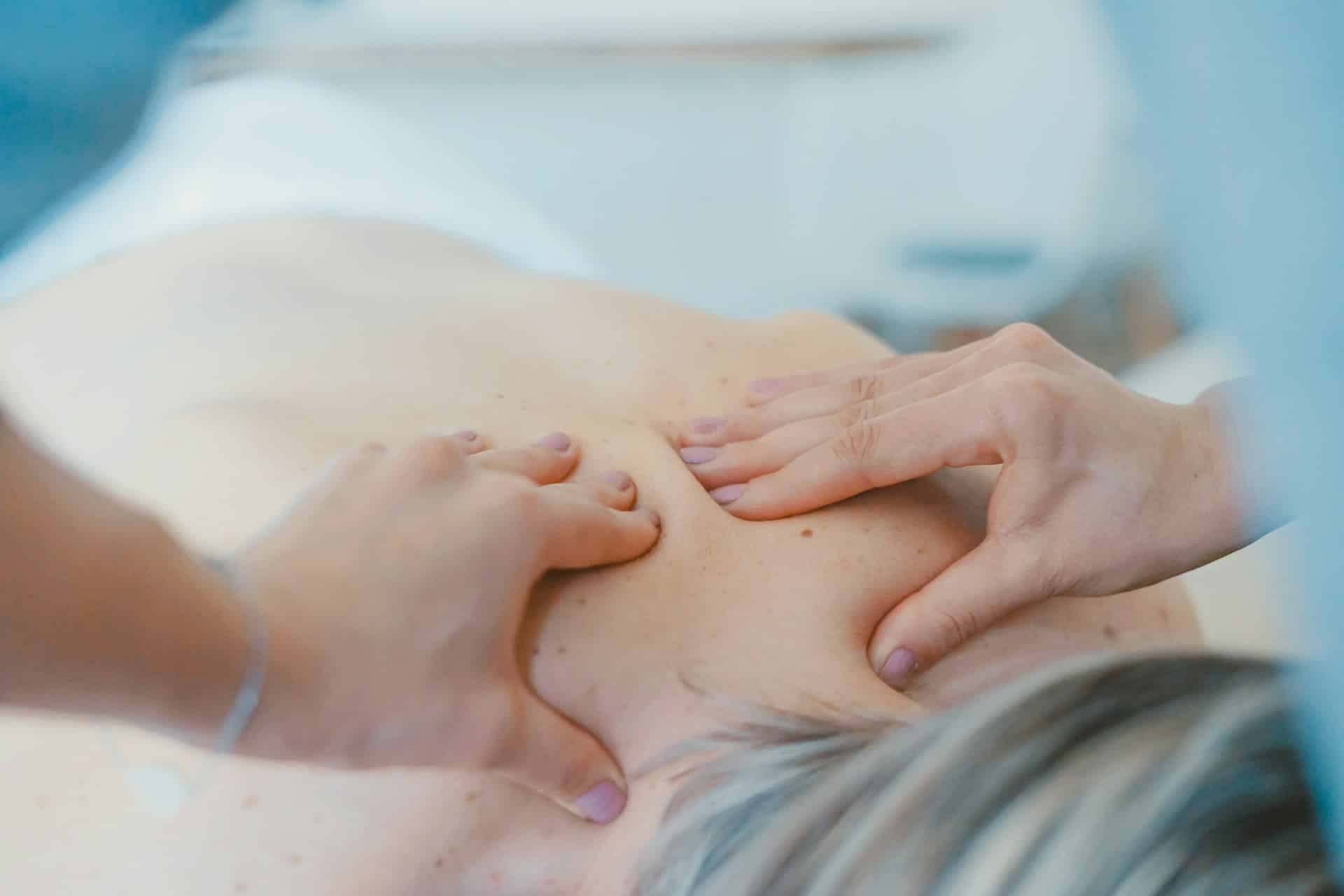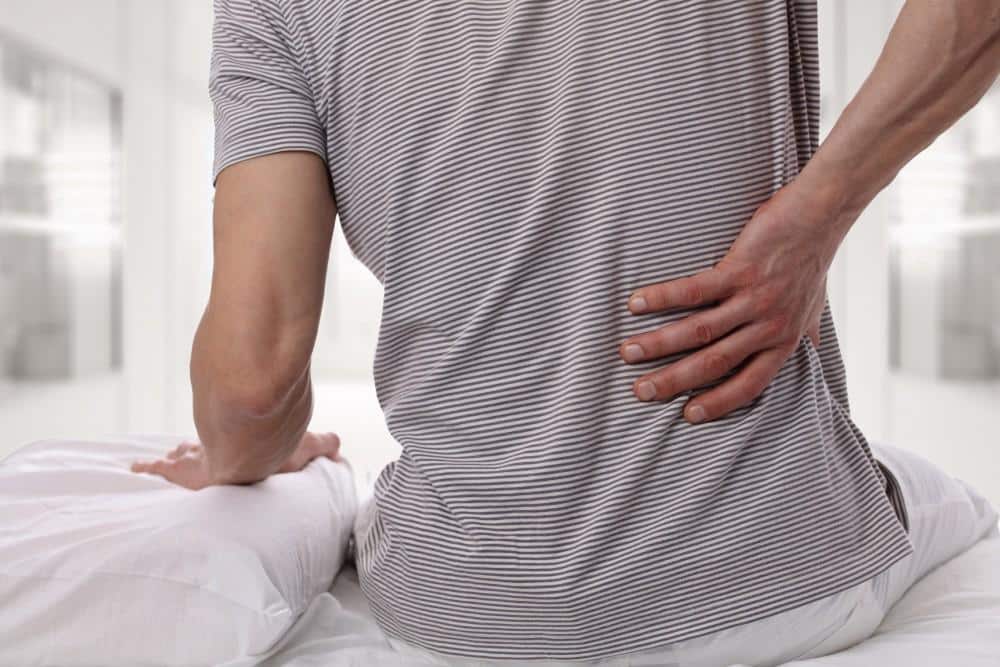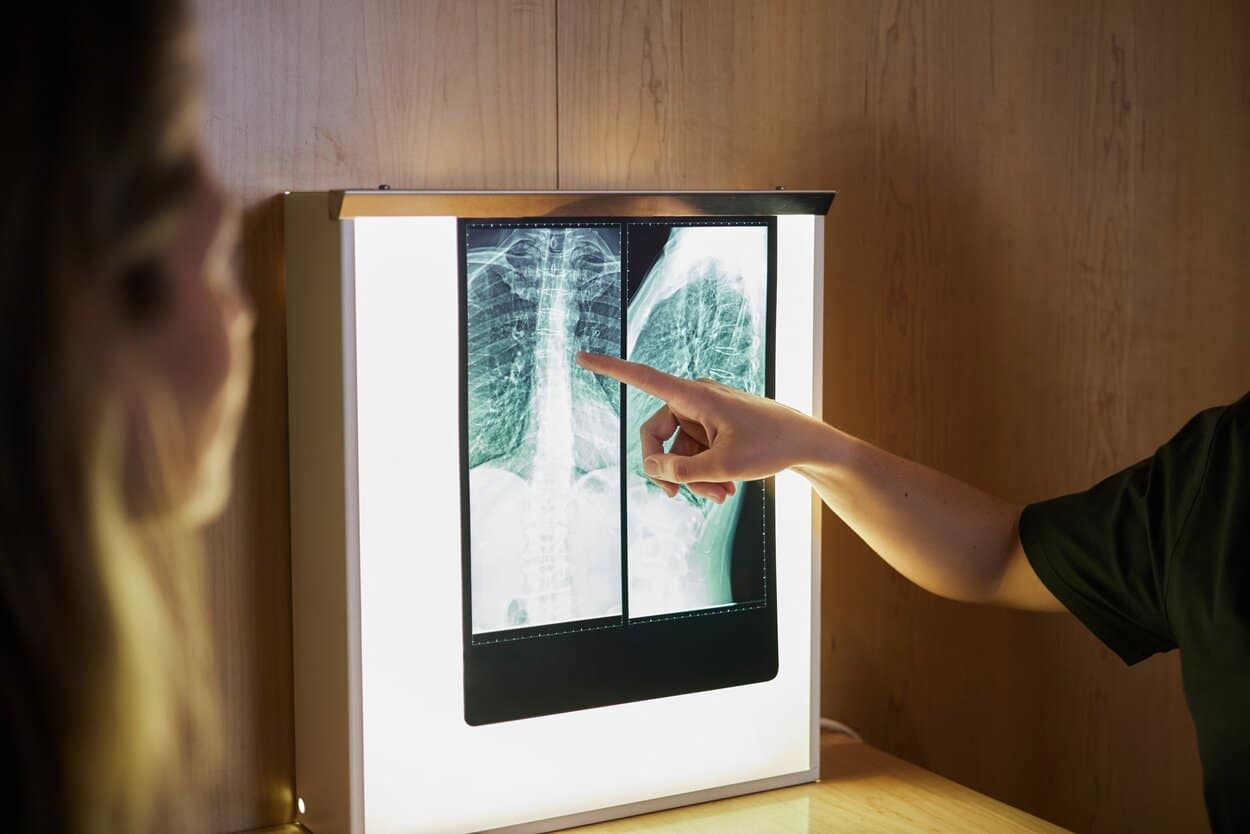Spinal stenosis, a condition resulting from the narrowing of spaces within the spine, presents a significant health risk, causing discomfort and potentially leading to nerve damage. While the causes may be manifold, from aging to spinal injuries, understanding its onset and progression is crucial for effective prevention and treatment. In the ensuing discussion, we will explore the intricacies of spinal stenosis, shedding light on the importance of early detection, lifestyle alterations, and the potential benefits of therapeutic exercises. This knowledge could empower patients to take proactive steps for a healthier spine.
Understanding Spinal Stenosis
Spinal stenosis, a condition affecting an estimated 8-11% of the population, is a degenerative ailment that involves the narrowing of spaces within your spine, which can put pressure on the nerves that travel through it. This ailment, primarily impacting those over the age of 50, can dramatically affect an individual’s quality of life, leading to pain, numbness, or even mobility issues.
A critical aspect of understanding spinal stenosis lies in comprehending its progression. In the early stages of Spinal Stenosis Progression, symptoms may be mild or even absent. However, as the condition advances, the narrowing of the spinal canal can increasingly constrict nerve roots, leading to more severe symptoms. This progression can be gradual and often exacerbated by certain physical activities and positions.
Stenosis Complications can be profound, extending beyond discomfort and pain. In severe cases, nerve damage can occur, which may lead to loss of sensation, impaired bladder or bowel control, or even paralysis. Moreover, the chronic pain associated with spinal stenosis can negatively impact mental health, contributing to conditions like depression. Understanding spinal stenosis, its progression, and potential complications are crucial steps in managing this degenerative condition and improving patient outcomes.
Causes of Spinal Stenosis
While there are numerous factors that can contribute to the development of spinal stenosis, the most common cause is the natural aging process, which can lead to wear and tear on the spine’s discs and joints. Over time, this deterioration can result in a narrowing of the spaces within your spine, which can put pressure on the nerves that travel through it, leading to spinal stenosis.
Aside from the ageing effects, a genetic predisposition can also play a significant role in the development of this condition. Certain individuals may be born with a small spinal canal, or might inherit conditions that lead to spine issues, thereby increasing their susceptibility to spinal stenosis.
Previous trauma or injuries to the spine can also cause spinal stenosis. Accidents or surgeries can lead to spinal instability or create bone spurs that intrude into the spinal canal.
Furthermore, certain medical conditions such as osteoarthritis, rheumatoid arthritis, and Paget’s disease can contribute to spinal stenosis. These conditions cause inflammation of the spinal joints or abnormal bone growth, respectively, which can lead to stenosis.
Understanding the causes of spinal stenosis is a critical step towards prevention and effective management of the condition.
Common Symptoms
Spinal stenosis, a progressive condition, manifests itself through a variety of symptoms that can significantly impact an individual’s quality of life. Pain, one of the most prevalent indicators, often accompanies the condition and varies in intensity and duration. Other common symptoms include numbness and weakness, which may be localized or extend to surrounding areas, and these indicators are crucial in identifying the onset and progression of spinal stenosis.
Identifying Spinal Stenosis Symptoms
In the journey to understand the complexity of spinal stenosis, the first step is to recognize its symptoms, which often manifest as common discomforts that can be easily overlooked. These signs can vary widely, often influenced by the spinal curvature impact. Patients may experience difficulties with balance, a decrease in physical endurance, or a progressive need to lean forward to relieve symptoms. All these may not be exclusive to spinal stenosis, thus making its identification more challenging. Posture correction methods can sometimes alleviate the discomfort, but it’s crucial for patients to seek professional help for a proper diagnosis. A thorough understanding of these symptoms is a pivotal step in managing and preventing spinal stenosis.
Pain in Spinal Stenosis
Among the myriad symptoms of spinal stenosis, pain stands out as the most common and debilitating, often significantly impacting a patient’s quality of life. The pain, usually felt in the neck or lower back, can be severe, constant, or intermittent depending on the degree of stenosis.
Stenosis Medication Efficacy is crucial in managing this pain. The following are key points to understand: 1. Anti-inflammatory drugs can reduce swelling and alleviate pain. 2. Analgesics may provide temporary relief. 3. In some cases, corticosteroids are prescribed to suppress the inflammatory response.
However, it is important to note that medication alone may not fully address the pain. The Emotional Impact of Stenosis, fueled by persistent discomfort, can exacerbate the pain experience, highlighting the necessity of psychological support in comprehensive stenosis treatment.
Numbness and Weakness Indicators
Often accompanying the discomfort of spinal stenosis, symptoms such as numbness and weakness present vital indicators of the condition’s progression and severity. These symptoms typically manifest due to pressure on the spinal nerves and can be likened to peripheral neuropathy, a condition characterized by similar nerve damage. The correlation between peripheral neuropathy and spinal stenosis serves to underscore the potential severity of unchecked symptoms. It is crucial to note the significance of numbness duration; persistent numbness is generally indicative of more advanced stenosis and may necessitate immediate medical attention. On the other hand, transient numbness, while still concerning, may point to earlier stages of the condition. Identifying these weakness and numbness indicators early aids in effective management and treatment.
Risk Factors
Understanding the risk factors for spinal stenosis is an essential step toward proactive prevention and early detection of this debilitating condition. Certain individual factors increase the likelihood of developing this condition, and some of them are unavoidable, such as genetic predisposition. Individuals with a family history of spinal stenosis or related conditions may have a heightened risk of experiencing it themselves.
However, other risk factors are modifiable, and these largely relate to lifestyle impacts. Three of these lifestyle-related risk factors are:
- Sedentary Lifestyle: Lack of physical activity can lead to weight gain and poor musculoskeletal health, both of which can contribute to spinal stenosis.
- Poor Posture: Chronic poor posture, especially during work, can put unnecessary strain on the spine, leading to its degeneration over time.
- Smoking: Tobacco use can damage the spine’s vascular structure and speed up the process of spinal degeneration.

Diagnosis Techniques
To accurately diagnose spinal stenosis, medical practitioners employ a variety of techniques. These procedures usually consist of identifying specific symptoms, conducting imaging tests, and performing thorough physical examinations. Each of these steps offers valuable insights into the patient’s condition and contributes to the formulation of an effective treatment plan.
Identifying Spinal Stenosis Symptoms
While the manifestation of spinal stenosis can vary significantly across patients, there are several characteristic symptoms that healthcare professionals utilize to identify and diagnose this condition. These symptoms are not unique to spinal stenosis, leading to potential Stenosis Misdiagnosis issues.
- Pain and numbness: This generally occurs in the back, neck, or extremities. The pain usually worsens when standing or walking.
- Weakness: Patients often experience weakness in their legs or arms.
- Problems with bladder or bowel function: Although less common, these can be indicative of severe spinal stenosis.
Understanding these symptoms is crucial for diagnosis and subsequent Alternative Treatment exploration. If you experience these symptoms, consult a healthcare professional to rule out other potential causes and confirm spinal stenosis.
Spinal Stenosis Imaging Tests
Once a patient’s symptoms suggest spinal stenosis, healthcare professionals typically utilize various imaging tests as a crucial step in confirming the diagnosis. These tests offer radiologic interpretations of the spine’s structure, enabling the identification of any narrowing or compression within the spinal canal.
Imaging modalities comparison is essential to determine the most suitable test. Choices include X-rays, which provide an initial overview of the spine’s condition; CT scans, which produce detailed cross-sectional images; and MRI scans, which offer high-resolution images of soft tissues, nerves, and the spinal cord. Each modality has its strengths and limitations; hence, the choice depends on the patient’s specific situation and the physician’s expertise. These imaging tests are indispensable tools in diagnosing spinal stenosis and planning subsequent treatment strategies.
Physical Examination Findings
In diagnosing spinal stenosis, a comprehensive physical examination is an invaluable tool that complements imaging tests, offering insights into the patient’s neurological function and the extent of potential spinal cord or nerve root compromise.
Three key components of the physical examination process include:
1. Posture Analysis: The way a patient stands and sits can indicate abnormal spinal curvature or alignment issues, often associated with spinal stenosis.
2. Gait Assessment: Observing the patient’s walking pattern can reveal signs of muscle weakness, balance problems, or pain, which may suggest nerve compression.
3. Neurological Examination: Detailed examination of reflexes, muscle strength, sensory function, and nerve root function can help identify the area of spinal cord or nerve root compression.
Each component aids in forming a detailed, comprehensive diagnosis of spinal stenosis.
Non-Surgical Treatments
Exploring the realm of non-surgical treatments, it’s essential to understand that these methods primarily aim to alleviate the pain and discomfort associated with spinal stenosis, without the need for invasive procedures. These treatments are largely focused on managing symptoms and improving quality of life.
Among the spectrum of non-surgical treatments, alternative therapies have shown promising results in mitigating spinal stenosis-related discomfort. Practices such as yoga and tai chi can aid in enhancing flexibility and strengthening the spinal muscles, thereby reducing the pressure on the spine.
Acupuncture, a cornerstone of traditional Chinese medicine, has also been recognized for its benefits in dealing with spinal stenosis. This technique involves inserting very thin needles into specific points of the body, which can stimulate the nervous system to release chemicals that change the experience of pain. Acupuncture benefits include its non-invasive nature and potential to improve the body’s functions and promote natural self-healing, thus making it an appealing option for patients seeking non-surgical treatments.
It’s important, however, to discuss all treatment options with a healthcare provider, who can guide you towards the most appropriate and effective approach based on your specific condition and needs.
Surgical Treatment Options
Delving into the realm of surgical interventions, it becomes evident that these options, while more invasive, often provide a more definitive solution to the debilitating symptoms of spinal stenosis. Surgical treatments aim to relieve pressure on the spinal cord or nerves, restore alignment and stability of the spine, and maintain normal post-surgical mobility.
Three primary surgical options exist:
- Decompression Laminectomy: This procedure involves the removal of the lamina, the back part of the vertebra that covers the spinal canal. It increases the size of the spinal canal and reduces pressure on the nerves.
- Spinal Fusion: In this procedure, two or more vertebrae are permanently connected with bone grafts and, often, metal rods and screws. It stabilizes the spine after decompression.
- Spinal Implants: Implant devices, such as spacers, are inserted between the vertebrae to increase space in the spinal canal.
These procedures can significantly improve the quality of life. However, post-surgery rehabilitation plays a vital role in the recovery process. It includes physical therapy to restore strength and flexibility, pain management, and patient education to prevent future spinal issues. It’s essential to discuss these options and rehabilitation plans with your healthcare provider to ensure the best possible outcome.
Living With Spinal Stenosis
Living with Spinal Stenosis necessitates adjustments in daily activities and underscores the significance of therapeutic exercise. Implementing specific strategies can facilitate the management of routine tasks, mitigating the impact of this condition on one’s lifestyle. Concurrently, a structured regimen of therapeutic exercises can play a pivotal role in enhancing flexibility, building strength, and reducing pain.
Managing Daily Activities
Adapting to daily life with spinal stenosis necessitates careful management of activities to mitigate pain and improve overall well-being. Posture improvement and ergonomic adjustments play crucial roles in achieving this.
- Posture Improvement: Maintaining a straight, neutral spine can alleviate pressure on your spinal cord and nerves. Regular mindfulness of your posture, especially during prolonged sitting or standing, is essential.
- Ergonomic Adjustments: Modifying your work and home environments to support good posture can significantly impact your comfort levels. This may include using ergonomically designed furniture and equipment, adjusting the height of your workstation, or using a supportive pillow.
- Activity Management: Regular breaks from any sustained position, coupled with gentle movements, can prevent stiffness and discomfort. It’s about balancing rest and activity without exacerbating symptoms.
Therapeutic Exercise Importance
Incorporating therapeutic exercises into your daily routine can be a pivotal aspect of managing and alleviating symptoms of spinal stenosis. Exercise selection plays a significant role in this process. A tailored program, often under the guidance of a physiotherapist, can focus on strengthening core muscles, improving flexibility, and enhancing overall spinal health.
Moreover, posture correction is a critical component of this therapeutic approach. Correct posture can reduce the pressure on your spinal cord and nerves, helping to mitigate the pain and discomfort associated with spinal stenosis. Specific exercises can also train your muscles to maintain this correct posture, contributing to long-term relief. Ultimately, therapeutic exercises combine both physical activity and education to empower you in managing spinal stenosis.

Prevention Strategies
Understanding the prevention strategies for spinal stenosis is paramount to mitigating the risk of this degenerative condition. Two of the most effective strategies include posture correction and weight management.
Posture correction is vital as it affects spinal alignment and reduces unnecessary strain on the spine. Practicing good posture involves maintaining a neutral spine position, avoiding slouching, and ensuring your work and living environments support spinal health.
Weight management is another crucial strategy. Carrying excess weight can place additional pressure on the spine, potentially exacerbating spinal stenosis or increasing the risk of its onset. Following a balanced diet and maintaining regular physical activity are key components of successful weight management.
To further understand these prevention strategies, consider the following:
- Posture correction: This includes regularly practicing exercises that promote good posture, using ergonomically designed furniture, and being mindful of your posture during daily activities.
- Weight management: This involves a combination of regular physical activity and a balanced, nutritious diet. It may also include regular check-ups with a healthcare professional to monitor progress and provide guidance.
- Consistent check-ups: Regular appointments with your healthcare provider can help detect early signs of spinal stenosis and provide guidance on appropriate preventive measures.
Exercises for Spinal Health
Maintaining optimal spinal health necessitates the inclusion of specific exercises designed to strengthen the back muscles, enhance flexibility, and promote proper posture. Exercises like partial crunches, wall sits, and hamstring stretches are particularly beneficial for spinal health as they provide comprehensive conditioning for the back and abdominal muscles.
Posture correction plays a crucial role in maintaining spinal health. Bad posture can cause the spine to change shape over time, leading to spinal stenosis. A physiotherapist can provide exercises and tips for correcting posture, such as keeping the body aligned while sitting, standing, and lifting objects.
The ergonomic essentials of daily tasks should not be overlooked. The way you sit at your desk, lift heavy objects, or even sleep can have a significant effect on your spine. Ergonomic principles should be applied at work and home environments to reduce the risk of spinal stenosis. This can include using a chair with good lumbar support and keeping items at a height that doesn’t require bending or stretching awkwardly.
Nutritional Advice
A balanced and nutritious diet plays a vital role in supporting spinal health and potentially mitigating the impact of conditions such as spinal stenosis. For those living with this condition, a targeted approach to nutrition can provide alleviation from symptoms and slow the progression of the disease.
There are numerous dietary considerations that may contribute to improved spinal health. Among the most significant are:
- Consumption of Anti-Inflammatory Foods: Foods such as leafy green vegetables, fatty fish, nuts, and berries possess anti-inflammatory properties that can reduce inflammation and pain in the spine.
- Hydration: Adequate water intake is essential to maintain disc health and spinal flexibility.
- Dietary Supplements: Incorporating supplements such as glucosamine, chondroitin, and omega-3 fatty acids can support joint health and reduce inflammation.
Incorporating these dietary changes and supplements can help manage symptoms and improve the quality of life for those with spinal stenosis. However, it is crucial to consult with a healthcare provider before beginning any new dietary regimen. As with all health conditions, individual nutritional needs and responses to dietary changes can vary widely.
Frequently Asked Questions
What Are the Potential Complications of Untreated Spinal Stenosis?
Untreated spinal stenosis can potentially lead to stenosis progression, resulting in severe pain, loss of mobility, and neurological issues. Timely surgical interventions are crucial to prevent these complications and preserve quality of life.
Are There Any Alternative or Holistic Treatment Methods for Spinal Stenosis?
Yes, alternative treatments for spinal stenosis include acupuncture, known to alleviate pain and improve mobility, and yoga, proven effective in enhancing flexibility, strengthening muscles, and promoting better posture to relieve spinal stenosis symptoms.
Does Spinal Stenosis Affect Life Expectancy?
Spinal stenosis does not directly affect life expectancy. However, its management, including spinal exercises and other treatments, can significantly impact the quality of life and overall health of affected individuals.
How Does Spinal Stenosis Impact Mental Health?
Spinal stenosis can significantly impact mental health, potentially leading to ‘Stenosis induced Anxiety’ due to chronic pain and limited mobility. Furthermore, ‘Depression Post Stenosis’ may occur from lifestyle changes necessitated by the condition.
Can Spinal Stenosis Be a Result of a Genetic Predisposition?
Yes, spinal stenosis can result from a genetic predisposition. Inherited spinal conditions could lead to its development, emphasizing the relevance of genetic testing in predicting and managing this degenerative spinal condition.

